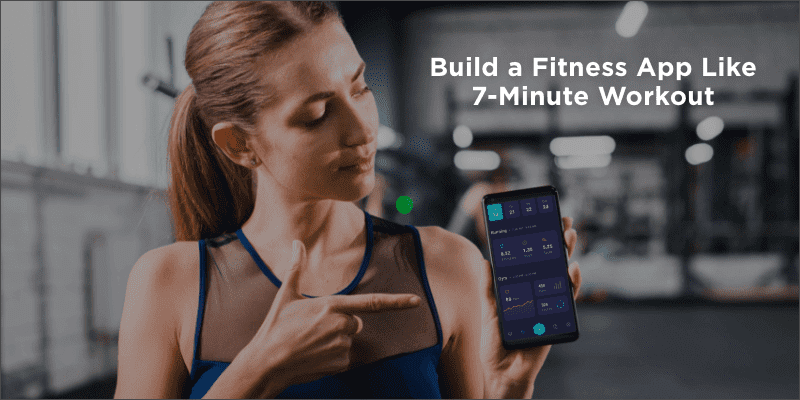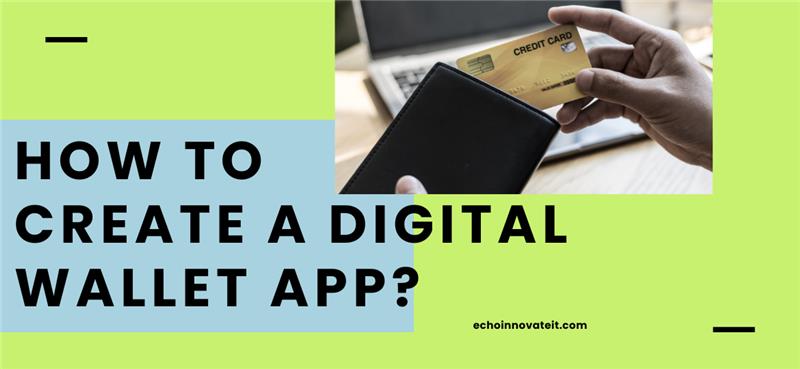How to Build a High-Impact Fitness App in 2025: A Complete Guide
Introduction: Mobile Fitness Apps in the Modern Wellness Era
The fitness industry in the United States has seen a digital transformation in recent years, and 2025 marks a new era for fitness app development. With more users relying on smartphones to stay healthy and track workouts, fitness mobile apps have become essential tools for personal well-being and corporate wellness. Whether on Android or iOS, users now demand features like AI-powered workout recommendations, real-time fitness tracking, personalized plans, and seamless integration with wearables. Developing a fitness app in 2025 offers businesses a chance to tap into a high-growth market while delivering real value through mobile-first experiences.
Why Businesses Should Invest in Fitness App Development in 2025
From startups and gyms to enterprise wellness providers, having a dedicated fitness mobile app can significantly increase customer engagement, brand trust, and retention. Fitness apps allow users to stay connected with their goals, receive professional advice, track progress, and join digital fitness communities. As wellness continues to dominate consumer priorities, developing a fitness app for iOS and Android platforms provides businesses with a scalable, profitable, and user-centered solution.
Step-by-Step Fitness App Development Strategy
1. Define Your Goals, Audience, and Key Metrics
Start by identifying the core purpose of your app—will it focus on home workouts, gym training, weight loss, or holistic health tracking? Define your target audience (e.g., busy professionals, athletes, beginners) and determine your key performance indicators (KPIs), such as daily active users (DAU), subscription rate, session time, and churn rate.
2. Conduct Market Research and Competitor Analysis
Analyze top-performing fitness apps in the U.S. to identify common features, design trends, user complaints, and pricing models. This competitive insight will help you determine which features to adopt, improve, or innovate. User feedback also provides valuable direction for UI/UX improvements.
3. Essential Features for Fitness Apps in 2025
To stand out in a saturated market, your app should include:
AI-powered workout recommendations
Real-time fitness tracking and analytics
Integration with wearables like Apple Watch, Fitbit, and Garmin
Customizable workout plans and progress dashboards
Push notifications and motivational reminders
Gamification features (badges, streaks, leaderboards)
Video tutorials and live-streaming workout sessions
Community forums and social sharing tools
Voice command functionality for hands-free usage
Offline mode for workouts without internet access
Choosing the Right Technology: Native vs. Cross-Platform
If you want superior performance and seamless hardware integration, go with native app development using Swift for iOS and Kotlin for Android. For faster deployment and lower costs, cross-platform development with Flutter or React Native is ideal, especially for MVPs or budget-conscious startups. Choosing the right tech stack is crucial to ensure compatibility with wearable devices, real-time tracking, and cloud syncing.
Modern UX/UI Trends for Fitness Apps
In 2025, user experience (UX) is more important than ever. A fitness app must be clean, intuitive, and designed for mobile-first usage. Consider one-hand navigation, dark mode support, real-time feedback visuals, and thumb-friendly layouts. Use motion design and interactive elements to make fitness routines feel dynamic. Also, ensure your app supports accessibility features like voice control and large touch targets.
AI, Machine Learning, and Wearable Integration
Artificial Intelligence enables apps to adapt workouts based on user progress, behavior, and goals. Machine learning algorithms can suggest training routines, track fatigue levels, and personalize meal recommendations. Meanwhile, wearable integrations—like syncing heart rate, steps, calories, and sleep data—create a comprehensive user experience. Supporting multiple wearable ecosystems can greatly expand your user base.
Prioritizing Privacy, Security, and E-E-A-T Compliance
With fitness apps handling sensitive health data, compliance with security and privacy standards is critical. Implement secure login methods such as biometric authentication, end-to-end encryption, and transparent data usage policies. To align with Google’s E-E-A-T standards, ensure your app content is backed by certified fitness experts, dietitians, or healthcare professionals. Providing credible content boosts both user trust and search engine rankings.
App Store Optimization (ASO) and Launch Strategy
App Store Optimization (ASO) ensures your app is discoverable. Use high-volume keywords like “fitness tracker,” “home workout app,” “Android gym coach,” or “iOS personal trainer.” Optimize your app title, description, and screenshots to increase visibility. Before launch, build anticipation with email campaigns, influencer collaborations, and early access promotions. Post-launch, encourage reviews, offer referral bonuses, and retarget users with push notifications and email sequences.
Monetization Models for Fitness Apps
There are multiple revenue streams available:
Freemium Model: Offer basic features for free and charge for premium content like advanced analytics, coaching, or exclusive routines.
Subscription Plans: Monthly or yearly access to all features, personalized plans, or live classes.
In-App Purchases: Sell custom workout packs, virtual merchandise, or meal plans.
Corporate Wellness Packages: License the app to businesses for employee fitness engagement.
Affiliate Marketing and Ads: Promote relevant health and fitness products within the app.
Ongoing Maintenance and Scaling Strategy
After launch, consistent app maintenance is critical. Use analytics tools to track performance, monitor user behavior, and identify bottlenecks. Regularly update the app with new features, improved UI/UX, and expanded content libraries. Scaling may include adding support for additional languages, AI chatbots, AR/VR fitness experiences, or integration with healthcare systems. Being agile ensures your app stays relevant in the competitive 2025 fitness tech landscape.
If you are thinking about how to create a fitness app, then studying Johnson & Johnson’s 7-minute workout app will help you head-start the business.
Today in this mobile era, there are a plethora of ways to stay fit without going to the gym.
A fitness app is one of the most used ways to stay energetic and fit throughout the day.
These apps allow a person to do their exercise without going to the gym and save time. We can say that we get personal training in the app. Among these fitness apps, you would find many apps that are specially made for helping people do high-intensity circuit workouts which saves a lot of time and energy. It’s also called 7-minute workout exercises and you would find a myriad of these kinds of apps in the Play store and app store.
Considerations for a Fitness App
If you have a fitness app on your phone then we are not surprised at all. After the launch of gadgets like the Apple Watch in 2015, people have become more aware of their health and fitness. Nowadays everyone’s top priority is their health and fitness.
In the earlier days, it was quite difficult to stay fit due to difficulty in finding fitness coaches. With the advancement in technology, the fitness industry has undergone a full digital transformation makeover. Ever since health and fitness app development has been offering several services with just one tap on their mobile phones. Therefore, the industry of health and fitness applications continues to expand. If you are looking forward to developing a fitness application for your business, then you are on the right track.
- As per the reports published by Market Watch in the year 2019, it is estimated that by the year 2026 the fitness app industry will reach $14.7 billion. It is predicted to grow at 23 percent CAGR by the meantime.
- As per the Statista report, the Fitness segment’s revenue reached $16,857 million in the year 2019.
- The Fitness segment’s revenue reached $17,963 million in 2020.
Consequently, the health and fitness application industry continues to grow and expand more with the emerging technologies.
The Science Behind the 7-minute Workout
You may have come across many of your colleagues, friends circle, or family, who might have multiple times explained their inability to go to the gym regularly due to their busy schedules. And it’s true.
Many people find it is hard to give enough time to their physical health because their considerable amount of time goes into doing their office work or business meetings. And that makes them swamped after office hours.
American Medicine of Sports Medicine came up with research that described the 7-minute workout as an effective way of losing weight and gaining extreme strength through the high-intensity circuit workout. The workout program caters to people to improve anaerobic and aerobic fitness without heavy weight lifting.
Keeping these in mind Chris Jordan, a Certified Strength, and Conditioning Specialist and the Director of Exercise Physiology at Johnson & Johnson’s Human Performance Institute come up with the Amazing app that has been downloaded more than 500,000+ by android users. The app has Massive iPhone Users as well.
Now, let’s dive deeper and know how to create a fitness app!
How to Develop a fitness app? Step by step guide
Step 1. Choose the Monetization Model
Choose the monetization model as per your choice. Examples of great monetization models are paid apps, in-app purchases, freemium, ads or sponsored content.
Step 2. Consider Basic Fitness App Features
You should keep in mind all the basic features of a fitness app while developing an app such as User profiles, Notifications, Social sharing, Geolocation.
Step 3. Hire a development Team
You need to hire a mobile app development team for developing your own fitness application to turn your business idea into a working solution.
Step 4. Workout Application Development
For launching an app for Android and iOS, you will require at least three developers – iOS and Android mobile app developers as well as a backend developer.
Create a Fitness App like 7 Minute workouts: Start With the Basics
J& J’s workout app consists of 72 exercises and 22 workouts, from which you can make 1000+ exercise variations. Let me clarify to you that all workouts can be done without any gym equipment and regardless of where you are. Keeping the 7-minute workout app in the mind, Build a fitness app that includes these components.
Body Weight
Remember the whole point of building a fitness app is to encourage users to give a few minutes for regular exercise by reducing heavy lifting. Make sure your app has exercises that don’t need any gym equipment. All the workout must be done through their own body weight.
High-Intensity workout
Workout time is what discriminates these exercises from the traditional gyming. You should keep in mind the exercises you include don’t consume more time. Users should be able to do it with high intensity and less time.
Order of Exercise
The workout app should have all the exercises in order and target different muscle groups.
Less Rest Duration
The ordered exercise will be able to reduce the rest time and help users complete exercise within less time.
Aerobics & Resistance Workout
Carefully planned aerobic and resistance exercises allow users to do a balanced workout which aids them in reducing weight and maintaining fitness.
Features You Must include In your Fitness App
To create a fitness app like the 7-minute app you should walk on the path of that app. Make sure you include all these features in your app to build your own app.

- Default Workout
- Set Fitness Level
- Smart Workout
- Custom Workout
- Workout Library
- Track Performance
Default Workout (7-Minute Workout)
Since the app’s core concept is a seven-minute workout, the app should have an option for a default workout that is made of simple exercises. It will allow your first-time users to understand the app.
Providing warm-up options will help them test the water before going directly into advanced exercise. Make sure you include a voice-over explaining the exercise and a video of fitness experts doing the proper exercise. Keep one thing in mind that your total exercise time should not exceed more than 10 minutes including 5 seconds of rest time between each exercise. However, you can customize the exercise according to your knowledge.
Set Fitness Level
Allow your app users to select their workout capacity and fitness level. A beginner in the workout should be able to get a workout program that suits their strength.
Also with the pre-decided questionnaire, let the user select their motivation. For example, the user can select a motivation reason like, “I enjoy having a healthy lifestyle” or “ I know I have to focus on my health”.
Ascertain that in the future, if the user would like to update his or her fitness level and motivation goal, s/he could easily do that.
Smart Workout
Your app should suggest them workout program according to the preferred fitness level (beginner, intermediate, and expert) the user has chosen. Ensure that you include complete workout details like the total number of cycles, rest duration between each exercise, and the total time the session would take to complete.
Also, it would be advisable if you will allow an option for warming up your users. If users don’t want to warm up, then there should also be an option for skipping the warm-up. Don’t forget to integrate a counter that helps the user to do exercise for the decided time.
Workout Library
Johnson & Johnson’s 7-minute workout app has 21 different types of workout plans that cover multiple exercises that don’t need any weight. They have created a workout library where a user of any expertise can browse and strat his exercise.
You should also create a fitness app that should have an option for finding suitable exercise for particular users. Don’t forget to include the number of cycles, Rest time between each exercise, and the total time of the exercise.
Custom Workout
What if your users who are pro and have become a pro using your app want to customize their own workout program? Like J & J’s 7 minutes workout app, you should also provide an option that lets users select multiple exercises to their personalized workout.
Track Performance
Perhaps this could be the handiest feature your fitness app should possess. Your app users might wanna check their fitness level and motivational goal on a frequent basis to know their progress. Hence, keep in mind to include performance measurement functionality in your app.
Guide For learning exercises
Your app’s novice users might have a problem understanding the exercise property at the initial stage. A visual guide would be a more convenient option your app users might find. Include multiple exercises and pigeonhole them into upper body workout, lower body workout, and core workout, so users can easily find them do it properly. Johanson & Johanson’s app has 72 different exercises that cover the major muscle of the body.
Workout Reminders
Do you want your app to be used regularly? Implement a reminder feature that will allow your users a notification when it’s time for their workout. Also, they will find it helpful in case they forget about their workout. You can also build an inactivity tracker that reminds your users about their days of inactivity.
Favorite Exercise
Allow your users to save their favorite exercise by liking and disliking. This will help them find their favorite exercise easily.
Audio Integration
Fitness enthusiasts always prefer to have inspiring music while they are working out. This keeps them focused and helps them complete exercise in proper form. Your app should have an inbuilt Player that allows the user to play their favorite songs while doing exercise. For example, J& J’s 7-minute app has integrated Google Play music API to provide the best experience during a workout.
So, these were the important features you should consider while creating a fitness app.
Additionally, if you want to enhance your app’s functionality and attract more users, you can add Voice integration and synchronization with wearables.
Voice integration will help users give voice commands during the workout without pulling out the smartphone every time they want to do something. Synchronization, on the other hand, helps users monitor their heart rate, pulse, distance covered, and more. Companies like Fitbit & Tomtom provide their APIs to integrate into the fitness application.
How to Monetize Your Fitness App?
This is one of the most commonly asked and most important questions after how to make a fitness app. You would want your app to perform extraordinarily and have thousands of downloads. A feature-rich app is considered half work done. But how will you earn from the app?
The answer is app monetization models.
Paid Apps
Paid apps are the ones that can be used only after you pay for them. You can monetize your fitness app with this model. Although most users don’t prefer paid apps because they find many free apps in the app store and play store.
A popular app called a 7-minute workout challenge initially started as a paid app for monetization. At that time, the app used to get only 28 downloads per day. However, when its creator decided to make it free, the app was downloaded 216,000 in just 3 days.
Freemium Apps
Most popular workout apps fall into this category. These kinds of fitness apps provide you with a free download. You can use its basic features for free. However, for better functionality and extra features, you have to download an app’s premium or pro version. You get charged on a monthly or yearly basis.
For example, you can build your basic app with the most essential features that can attract more users initially.
Once they like your app, you can provide them with your Pro app that has functionality like wearables synchronization, voice control, etc. A fitness app 8 fit has its pro version that users can buy on a three-month or yearly basis.
In-app Ads
Since your app targets a particular niche that loves to exercise on a daily basis. If your app gets rave reviews and gets great downloads, you may have an opportunity to monetize your app. For example, a supplement provider might contact you to display their ads in your mobile app. So by sponsorship, you can earn from your fitness app.
Cost of Developing a Fitness Trainer App
The cost of developing a fitness app comprises various aspects i.e. features, UI/UX design, quality assurance services, DevOps services, and project management. The final cost may vary depending on several factors.
Developers rate based on different locations on an hourly basis:
U.S developers: $50 to $250 per hour
Eastern Europe developers: $30 to $150 per hour
India developers: $10 to $80 per hour
Let’s Breakdown the Costs for Different Activities:
Technical documentation (40 hours- $1000 to $2000)
UI/UX design (60 hours- $1500 to $3000)
Front-end and Back-end development (400 hours- $10,000 to $20,000)
MVP testing (80 hours- $2000 to $4000)
Polishing and bug fixing (40 hours- $1000 to $2000)
Developing a fitness app might cost you somewhere around $30.000 for one platform ( iOS or Android), and for two platforms it will cost you approximately $45000. Spending this much amount will guarantee your app to stand ahead in the competition.
Conclusion: Make a Fitness App
As per the Globe Newswire, the worldwide fitness app market is expected to touch USD 15.96 billion by 2026. And that is a positive sign for those who want to invest in this niche Fitness app development will also see a considerable rise due to the growing demand for these kinds of apps.
Are you ready to create a fitness app like a 7-minute workout? As an experienced fitness app developer, we have worked on several projects like this. It has given us authority over tracker apps. Let’s talk.
FAQs
How much does it cost to develop one?
Costs typically range from $25,000 to $100,000 depending on features, platforms, and developer rates.
How long does it take to develop a dating app?
Depending on complexity, it can take 3 to 9 months to build a full-featured app.
What features are necessary in a dating app?
User profiles, swiping or matching mechanisms, chat functionality, geolocation, and secure login are essential.
How do I start building a dating app?
Begin with market research, define your target audience, choose essential features, and create a design prototype before development.
What is a fitness app?
A fitness app is a mobile application that helps users monitor their workouts, track progress, set health goals, and follow personalized training routines.
How do fitness apps work?
They use sensors, AI, and manual input to track workouts, suggest routines, offer coaching, and analyze progress over time.
What are must-have features for a fitness app in 2025?
Key features include workout tracking, AI-based recommendations, wearable integration, gamification, and expert content.
How do fitness apps make money?
Common monetization methods include subscriptions, in-app purchases, corporate wellness licensing, and affiliate marketing.
How do I market my fitness app in the U.S.?
Use app store optimization (ASO), influencer partnerships, paid ads, social media marketing, and email campaigns.
How can I make my fitness app stand out in 2025?
Incorporate cutting-edge features like AI coaching, AR workouts, and community challenges to boost engagement.
What is the best keyword strategy for fitness apps?
Focus on keywords like “home workout app,” “Android fitness app,” “iOS fitness tracker,” and “personal trainer app.”



